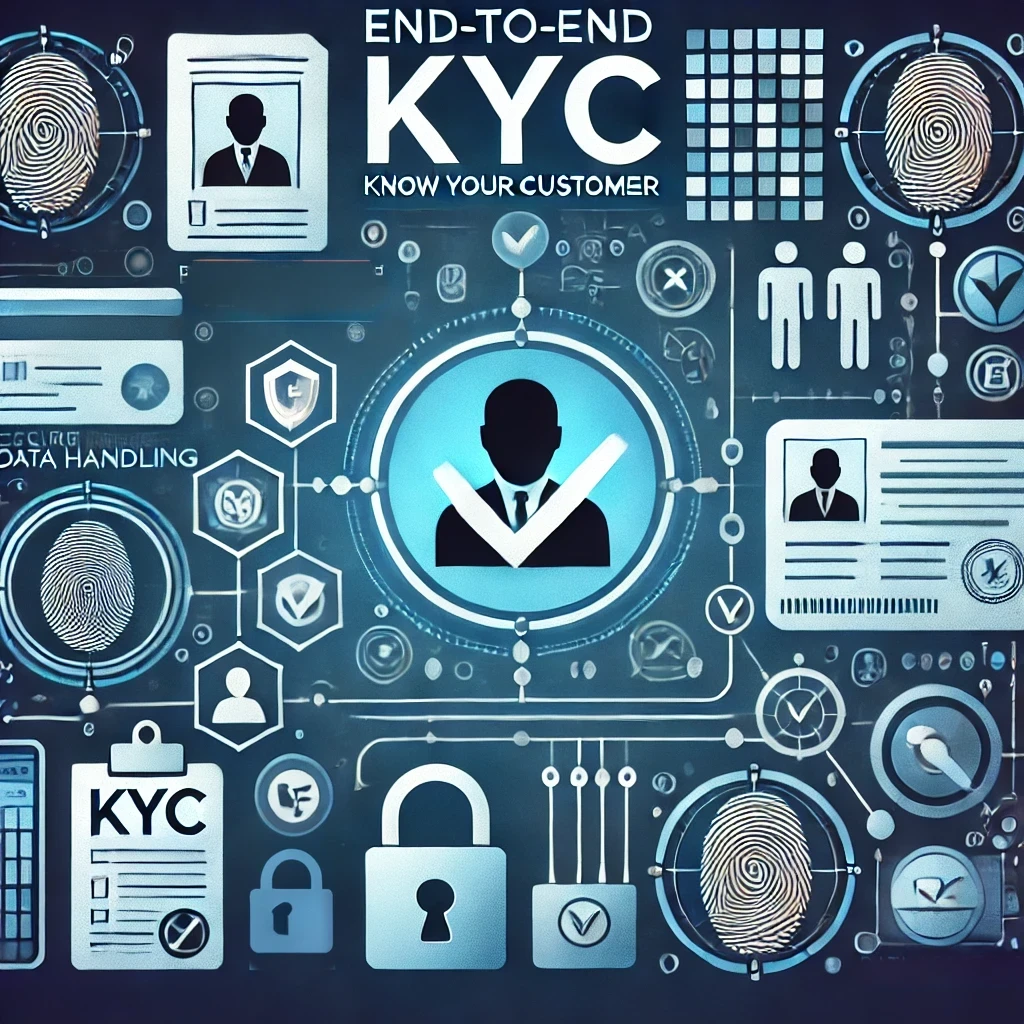In today’s world, keeping money safe is a big priority. That’s where Know Your Customer (KYC) comes in. It’s a way for banks and other financial companies to make sure they know who their customers are. This isn’t just about filling out forms at the start; it’s about continuously checking that everything is still correct and that there’s no suspicious activity happening. This is really important because it helps prevent illegal money from moving around in the system. KYC is like a security guard that makes sure only the good guys can get through.
There are two key parts of KYC that keep it working right: periodic reviews and ongoing monitoring. Periodic reviews mean regularly updating and checking the information we have about customers to make sure it’s still true. Ongoing monitoring is about watching over transactions to catch anything unusual that might suggest something illegal is happening.
As the way we handle money keeps changing and criminals get smarter, these two practices are our best tools for staying one step ahead. They help ensure that our financial systems stay clean and trustworthy. This article talks about how important these practices are in the finance world, showing that they’re not just routine checks but essential actions that keep our economy safe.
Why are periodic reviews and monitoring important for KYC?
In finance, KYC is crucial not just at the start but all the way through. It’s about keeping an eye on customer information regularly to make sure everything is up to date and spot any potential issues early. Think of it as being similar to checking your map regularly on a long journey to make sure you’re still going in the right direction.
As the rules around finance get tighter and criminals find new ways to break them, it’s more important than ever to keep this monitoring going. This constant check helps businesses stay on the right side of the law and keeps their operations running smoothly. By reviewing customer information regularly and keeping a constant watch, companies can spot problems before they grow and stay ahead of changes in rules.
Here are some straightforward steps to make these processes work better:
Update Risk Checks Often: Keep your methods for checking risks up to date with the latest rules and potential threats. This makes sure your KYC practices are strong and ready to face current challenges.
Use Technology Wisely: Use technology to help you monitor customer activities in real-time and spot anything unusual quickly. This makes the process more efficient and accurate.
Educate Your Team: Make sure everyone in your team knows about the latest in compliance and how to follow best practices. A well-informed team is your first defence against breaking the rules.
Be Open: Keep a good line of communication with regulators and everyone involved. Being open about how you manage compliance builds trust and shows your commitment to doing things right.
In short, regular reviews and monitoring are essential for keeping up with compliance and running a healthy business in finance. It’s not just about following rules; it’s about being smart and proactive in protecting your business and customers.
What is Included in a KYC Periodic Review?
A key component of maintaining compliance and managing compliance risk in the financial sector is to implement a rigorous KYC periodic review. This isn’t just a regulatory requirement; it’s your frontline defence against evolving financial crimes. First and foremost, accurate and up-to-date customer identification information sits at the core of this process. This includes verifying changes in customer’s legal status, official documentation, and beneficial ownership structures that might alter the risk they present.
Equally crucial is reassessing each client’s risk profile based on current transactions and behavioural patterns—an ongoing monitoring process that brings to light any anomalies or red flags requiring immediate attention. Part of this involves reviewing the consistency of the customer’s activity with their stated purpose upon account creation, as well as adapting to any shifts in regulatory requirements or emerging threats. Remember, a meticulous KYC periodic review is not just about ticking off boxes on a compliance checklist; it’s an evolving strategy essential for keeping pace with both criminals’ sophistication and tightening legislative landscapes around the globe.
How Does Customer Due Diligence Fit into the Periodic Review Cycle?
Customer due diligence (CDD) isn’t just a one-time task but an ongoing process, critical within the KYC periodic review cycle. This cyclical engagement goes beyond mere identity verification; it dives deep into understanding customer behaviour and risk potential over time. As financial landscapes and individual circumstances evolve, so too does the risk associated with customers. Periodic reviews ensure that businesses don’t find themselves inadvertently facilitating money laundering or financial fraud, reflecting CDD’s significant role in maintaining robust KYC compliance.
By integrating CDD effectively within these periodic reviews, organisations not only adhere to regulatory mandates but also foster a deeper insight into their client base. This proactive approach allows for the early detection of anomalies and changes in risk profiles, prompting timely adjustments to customer management strategies. Thus, thorough due diligence becomes more than a regulatory checkbox—it transforms into a dynamic tool for safeguarding against emerging threats while underpinning the integrity of financial transactions in an ever-complexifying digital era.
KYC Periodic Review Checklist
To make sure a financial business stays safe and follows the rules, it’s important to regularly check up on customers. This isn’t just about looking at their information once; it’s about making sure that information stays true and that nothing risky is happening. Here’s a simple checklist, that helps do just that:
- Check Customer Details Again: Make sure the information you have about your customers is still correct. This includes their name, address, and anything else that proves who they are. People’s situations can change, and it’s important to keep up.
- Understand Ownership Changes: If you’re dealing with a business, it’s crucial to know who owns it. Sometimes, the ownership can change in ways that might make the business riskier to work with. Stay updated on these changes.
- Review Their Behaviour: Look at how customers are using their accounts. Has anything changed in a way that doesn’t make sense or seems suspicious? This could be a sign of something wrong.
- Match Activities to Their Original Purpose: When customers opened their accounts, they said what they’d use them for. Check if what they’re actually doing matches up with this. If not, it might be worth a closer look.
- Stay on Top of New Rules: Laws and rules about handling money can change. Make sure your checks are always based on the latest information, so you’re not caught off guard by new requirements.
- Look Out for Red Flags: Be alert to any warning signs of illegal activities, like money laundering. This could be unusual transactions or sudden changes in how much money is moving through an account.
Following this checklist isn’t just about ticking boxes; it’s about actively protecting your business from financial crimes and ensuring you’re always on the right side of the law.
Why is ongoing monitoring a crucial part of robust customer due diligence?
Ongoing monitoring is a key part of keeping financial dealings safe and sound. It’s like having a constant watch over what’s happening, which is essential for a few important reasons:
- Catching Changes Quickly: People’s situations and businesses evolve. What was true yesterday might not be the case today. Ongoing monitoring helps catch these changes as they happen, ensuring that the customer information you rely on is always accurate.
- Spotting Suspicious Activity: By keeping a close eye on transactions and account behaviour, any unusual patterns can be spotted early. This is crucial for preventing financial crimes like money laundering, which can be complex and hard to detect without consistent observation.
- Adapting to New Risks: The world of finance is always changing, with new risks appearing all the time. Ongoing monitoring means you can adapt quickly, updating your strategies to tackle these new challenges head-on.
- Meeting Legal Requirements: The law requires financial businesses to not only know their customers at the start but to keep this knowledge up to date. Ongoing monitoring is how businesses meet this requirement, avoiding legal penalties and keeping their operations legitimate.
- Maintaining Trust: Customers and the wider community trust financial institutions to handle money safely. By actively monitoring customer activities, businesses show they’re taking this responsibility seriously, which helps maintain and build that trust.
In summary, ongoing monitoring is a vital part of due diligence that keeps businesses, their customers, and the financial system safe. It ensures that any potential problems are identified and addressed quickly, keeping operations running smoothly and within the law.
The Timing and Types of Ongoing KYC Monitoring
Ongoing KYC monitoring is essential for keeping financial operations safe and compliant. It involves a continuous effort to understand and mitigate risks associated with customer relationships. Here’s how to effectively manage this process, focusing on the timing and specific types of monitoring, including Perpetual, Trigger, and Periodic Monitoring. The Timing of Ongoing Monitoring Effective KYC monitoring utilises a combination of approaches to ensure comprehensive oversight:
- Perpetual Monitoring: This is the continuous, real-time review of transactions and customer activities. It ensures immediate identification of any unusual or suspicious behaviour, allowing for quick action to mitigate risks.
- Trigger Monitoring: This approach involves monitoring based on specific events or changes in a customer’s profile, such as a sudden increase in transaction volume or changes in ownership structure. These triggers prompt an immediate review to assess and address any new risks.
- Periodic Monitoring: Scheduled at regular intervals (e.g., annually, bi-annually), this type of monitoring ensures that customer information is current and accurately reflects their risk profile. It’s a systematic check to maintain up-to-date compliance and risk assessment.
Types of Ongoing Monitoring Incorporating the timing strategies above, ongoing KYC monitoring covers several critical areas:
- Transaction Monitoring: This focuses on analysing transactions for any that are out of the ordinary, potentially signalling fraud or money laundering.
- Customer Information Updates: Regular verification that customer details are correct and reflect current circumstances, including checks during periodic reviews.
- Risk Level Reassessment: Adjusting the intensity of monitoring based on changes in a customer’s risk profile, identified through both perpetual and trigger monitoring.
- Regulatory Compliance Checks: Ensuring that KYC practices align with current laws and regulations, adapting to changes as necessary.
- Behavioural Analysis: Looking beyond transactions to overall customer behaviour, identifying risks through patterns that may not be immediately apparent.
By integrating Perpetual, Trigger, and Periodic Monitoring into your ongoing KYC efforts, your institution can more effectively manage risks, maintain compliance, and foster trust with customers.
What are the 4 basic steps to monitoring?
To ensure your compliance monitoring is up to scratch, especially with KYC practices, it’s crucial to break down the process into four straightforward, actionable steps. This approach not only streamlines your efforts but also bolsters your compliance framework. Here’s how to tackle these steps with an eye on enhancing KYC controls and keeping on top of compliance monitoring:
- Set Clear Goals: Starting with a solid foundation, establish clear and achievable goals for your monitoring activities. In the realm of KYC controls and compliance monitoring, these goals might range from verifying the accuracy of customer data to thwarting financial fraud and staying aligned with the latest regulatory updates. Setting specific goals directs your monitoring efforts towards critical compliance and risk management areas.
- Select Key Indicators: Once your goals are laid out, pinpoint the key indicators that will signal the effectiveness of your KYC controls and overall compliance stance. These indicators might include unusual patterns in customer transactions, inconsistencies in customer documentation, or failures to meet regulatory deadlines. Choosing precise indicators is vital for focused and efficient monitoring.
- Gather and Analyse Data: With your indicators identified, it’s time to collect the relevant data for analysis. This step involves examining transaction histories, verifying customer identification documents, and reviewing compliance reports. Analysing this data enables you to assess the strength of your KYC controls and spot potential compliance vulnerabilities.
- Act on Insights and Adapt Strategies: The culminating step is to act decisively based on the insights gained from your analysis. Actions might involve refining KYC processes, ramping up customer due diligence efforts, or improving staff training on compliance practices. Acting on these insights is crucial for upholding a robust compliance framework and mitigating risks effectively.
By adhering to these four steps—setting clear goals, selecting key indicators, gathering, and analysing data, and acting on insights—you’ll ensure your compliance monitoring is both effective and proactive. This structured method supports stringent KYC controls and prepares you to respond swiftly to regulatory changes.”
What is the difference between periodic review and ongoing monitoring?
In the framework of KYC controls and compliance, understanding the distinction between periodic review and ongoing monitoring is pivotal. Both play crucial roles in safeguarding against financial risks and ensuring regulatory adherence, but they operate on different timelines and focus areas.
Periodic Review
A periodic review is a scheduled check-up of your customers’ information and risk profiles. It occurs at fixed intervals, such as annually or bi-annually, regardless of external triggers. The primary aim is to ensure that all customer data remains current and accurate over time. This process might involve:
- Re-verifying customer identification and documentation.
- Assessing any changes in the customer’s business activities or risk factors.
- Updating customer risk profiles based on new information.
Periodic reviews are comprehensive, taking a snapshot of each customer’s status at a specific point in time to confirm they still meet compliance standards.
Ongoing Monitoring
Ongoing monitoring, on the other hand, is a continuous process that happens in real time. It’s designed to identify and respond to any unusual or suspicious activities that could indicate money laundering, fraud, or other compliance issues. Key aspects include:
- Watching for significant transactions or changes in transaction patterns that deviate from a customer’s normal behaviour.
- Alerting to any red flags or indicators of financial crime.
- Adjusting a customer’s risk profile as new information comes to light through their transaction activities.
This dynamic approach ensures immediate attention to potential compliance or risk concerns as they arise, rather than waiting for the next scheduled review.
Key Differences
The main difference between periodic review and ongoing monitoring lies in their frequency and trigger points. Periodic reviews are time-based, offering a regular, comprehensive reassessment of each customer. Ongoing monitoring is event-driven, focusing on detecting and acting on suspicious activities as they occur.
Both are essential for a robust compliance strategy, with periodic reviews ensuring long-term accuracy and relevance of customer information, and ongoing monitoring providing immediate safeguards against emerging threats.
Wrapping up
In concluding our discussion on the pivotal roles that periodic reviews and ongoing monitoring play within KYC frameworks, it’s clear these elements are fundamental to upholding compliance and managing risk in the finance sector. These aren’t just routine compliance tasks; they’re active measures that significantly enhance the security and reliability of financial operations.
Periodic reviews are key, scheduled opportunities to ensure that customer information is not only up to date but also accurate. These reviews act as crucial checkpoints, allowing for the adjustment of customer profiles to reflect any change in their circumstances or associated risk. This regular, systematic evaluation is vital for remaining in step with both regulatory demands and the shifting landscape of financial threats.
Ongoing monitoring provides the necessary continuous oversight to quickly identify and act upon any suspicious or anomalous activities. This vigilance is essential for early detection of potential risks, from unexpected transaction patterns to indications of financial crime, ensuring a prompt response to safeguard against potential threats.
Merging these practices forms a comprehensive approach to KYC compliance, blending structured reviews with persistent surveillance to defend against the dynamic challenges posed by financial crime. By prioritising both periodic reviews and ongoing monitoring, financial institutions not only meet regulatory requirements but also foster a secure environment for their activities and their clients.
In summary, the synergy between periodic reviews and ongoing monitoring is central to a robust KYC strategy. Focusing on these essential practices allows financial institutions to confidently navigate the complexities of the current financial ecosystem, protecting both their interests and those of their customers against an ever-changing backdrop of risks.



